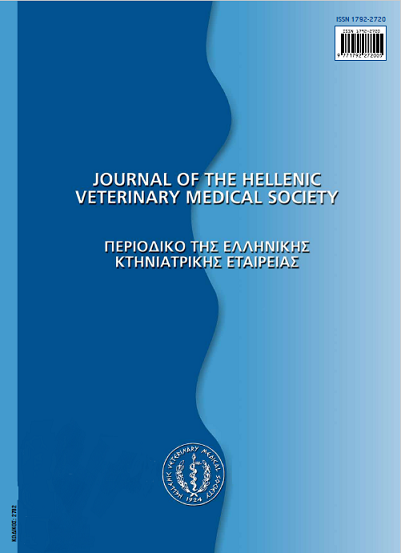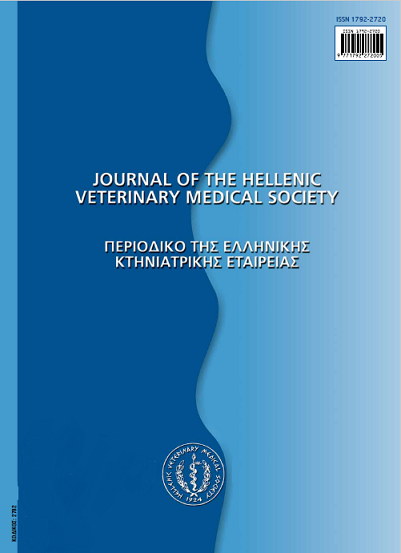Evaluation of common in vitro used chemicals' effect on motility and chromatin stability of boar spermatozoa
Résumé
Chemicals such as heparin, calcium ionophore and dimethyl sulfoxide (DMSO) have been used in sperm's function evaluation assays, since they are facilitating the sperm capacitation and the induction of acrosome reaction. Many researchers modified porcine in vitro protocols purposing the improvement and validation of in vitro assays. The modification of the above mentioned chemicals' concentration could have a detrimental effect on sperm characteristics, relative to normal sperm function and fertilizing ability. The present study aimed to investigate in vitro effect of various concentrations of, a) heparin (2, 4, 6, 8 and 10 μg/ml), b) calcium ionophore A23187 (10, 20, 30 μΜ) and c) DMSO (1, 2, 3 % v/v), that have been used in sperm evaluation techniques, on chromatin instability and total motility of boar spermatozoa. Eight boars were used as semen donors, providing 20 ejaculates. Acridine orange test and subjective evaluation of semen by a microscope equipped with a heated plate were performed in order to evaluate chromatin integrity and motility, respectively. The results of this study showed that the addition of heparin, A23187 and DMSO at concentrations of 8 - 10 μ^πιΐ, 10 μΜ and 1%, respectively, can be used for in vitro handling of boar spermatozoa without reduction of their motility and chromatin quality.
Article Details
- Comment citer
-
TSAKMAKIDIS (Ι.Α. ΤΣΑΚΜΑΚΙΔΗΣ) I. A., KHALIFA, T., LYMBEROPOULOS (Α.Γ. ΛΥΜΠΕΡΟΠΟΥΛΟΣ) A. G., MICHOS (Η.Α. ΜΙΧΟΣ) I. A., & BOSKOS (Κ.Μ. ΜΠΟΣΚΟΣ) C. M. (2017). Evaluation of common in vitro used chemicals’ effect on motility and chromatin stability of boar spermatozoa. Journal of the Hellenic Veterinary Medical Society, 62(2), 118–124. https://doi.org/10.12681/jhvms.14840
- Numéro
- Vol. 62 No 2 (2011)
- Rubrique
- Research Articles
Authors who publish with this journal agree to the following terms:
· Authors retain copyright and grant the journal right of first publication with the work simultaneously licensed under a Creative Commons Attribution Non-Commercial License that allows others to share the work with an acknowledgement of the work's authorship and initial publication in this journal.
· Authors are able to enter into separate, additional contractual arrangements for the non-exclusive distribution of the journal's published version of the work (e.g. post it to an institutional repository or publish it in a book), with an acknowledgement of its initial publication in this journal.
· Authors are permitted and encouraged to post their work online (preferably in institutional repositories or on their website) prior to and during the submission process, as it can lead to productive exchanges, as well as earlier and greater citation of published work.






